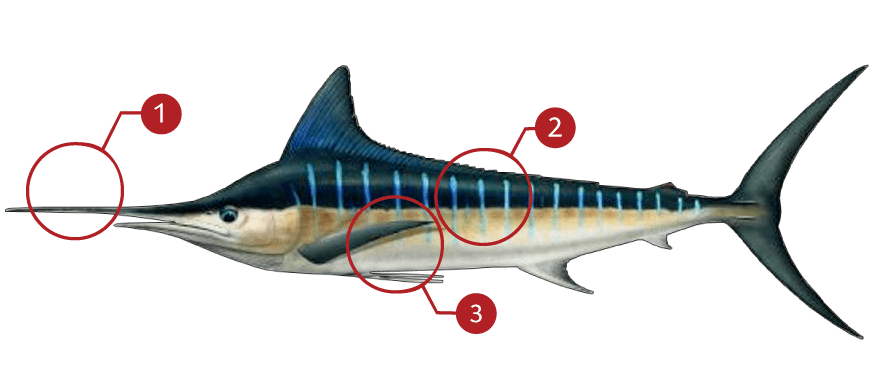STRIPED MARLIN
How to identify a Striped Marlin
Even in the largest specimens this fin is at least equal to 90 percent of the body depth. Like the dorsal fin, the anal and pectoral fins are pointed. They are also flat and movable and can easily be folded flush against the sides, even after death. The sides are very compressed. The lateral line is straight, single and clearly visible. The back is steely blue fading to bluish silver on the upper flanks and white below the lateral line. There are a number of iridescent blue spots on the fins and pale blue or lavender vertical stripes on the sides. These may or may not be prominent, but they are normally more prominent than those of other marlins, and they persist after death, which is not always true of other marlins.
Where to catch Striped Marlin
Found in tropical and warm temperate waters of the Indian and Pacific oceans, the striped marlin is pelagic and seasonally migratory, moving toward the equator during the cold season and away again during the warm season.
IDENTIFICATION

| |
The bill is twice the length of its lower jaw |
| |
The back is steely blue fading to bluish silver on the upper flanks and white below the lateral line. There are a number of iridescent blue spots on the fins and pale blue or lavender vertical stripes on the sides |
| |
The dorsal fin, the anal and pectoral fins are pointed |
TARGET AREAS
|
|
Acknowledgements: We thank TAKEMEFISHING.org (www.takemefishing.org), Wisconsin Department of Natural Resources, Indiana Department of Natural Resources for their contributions to these FISH FACTS.

